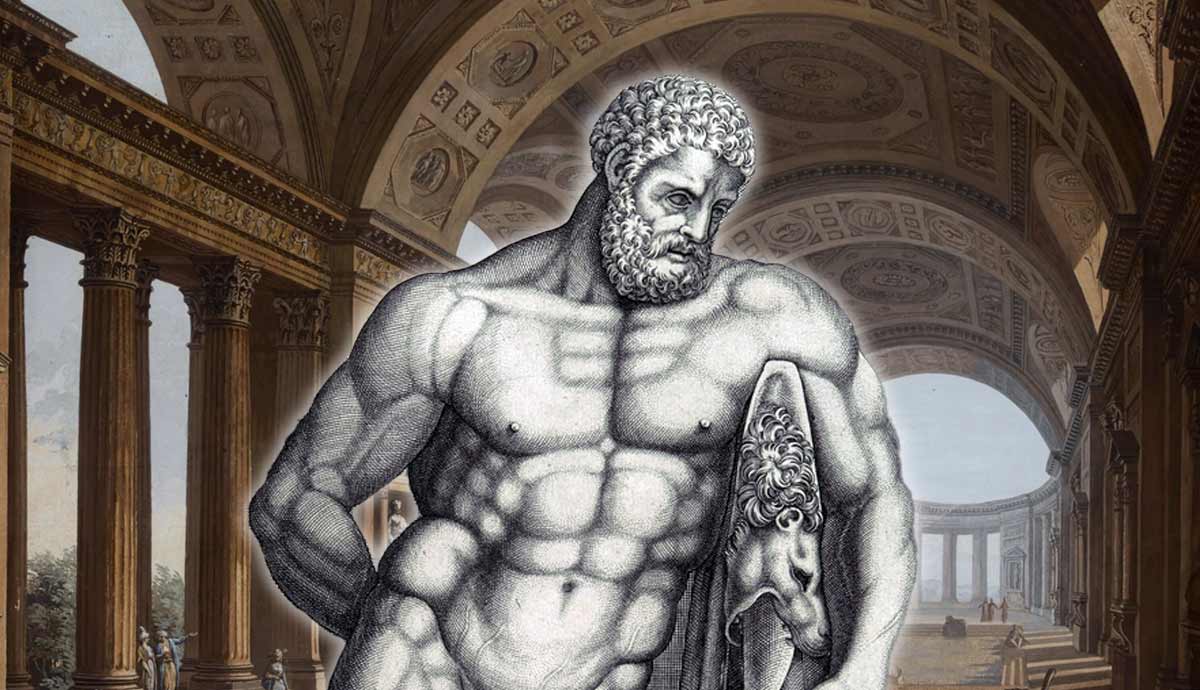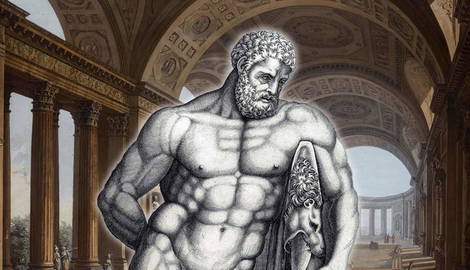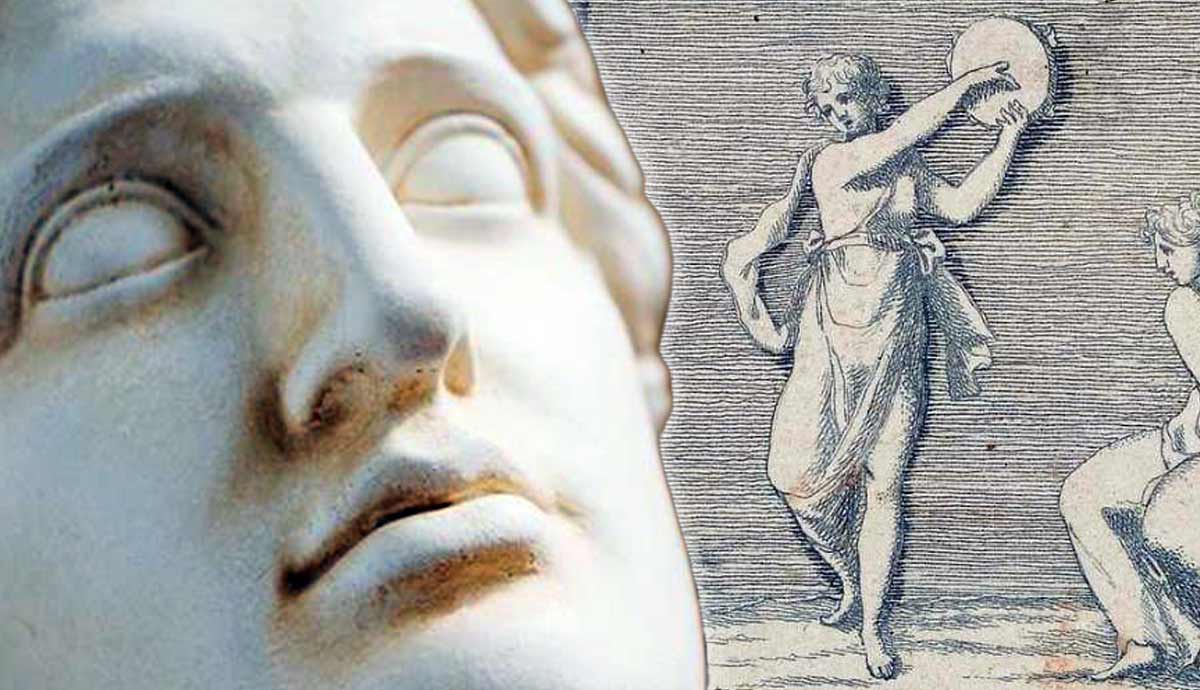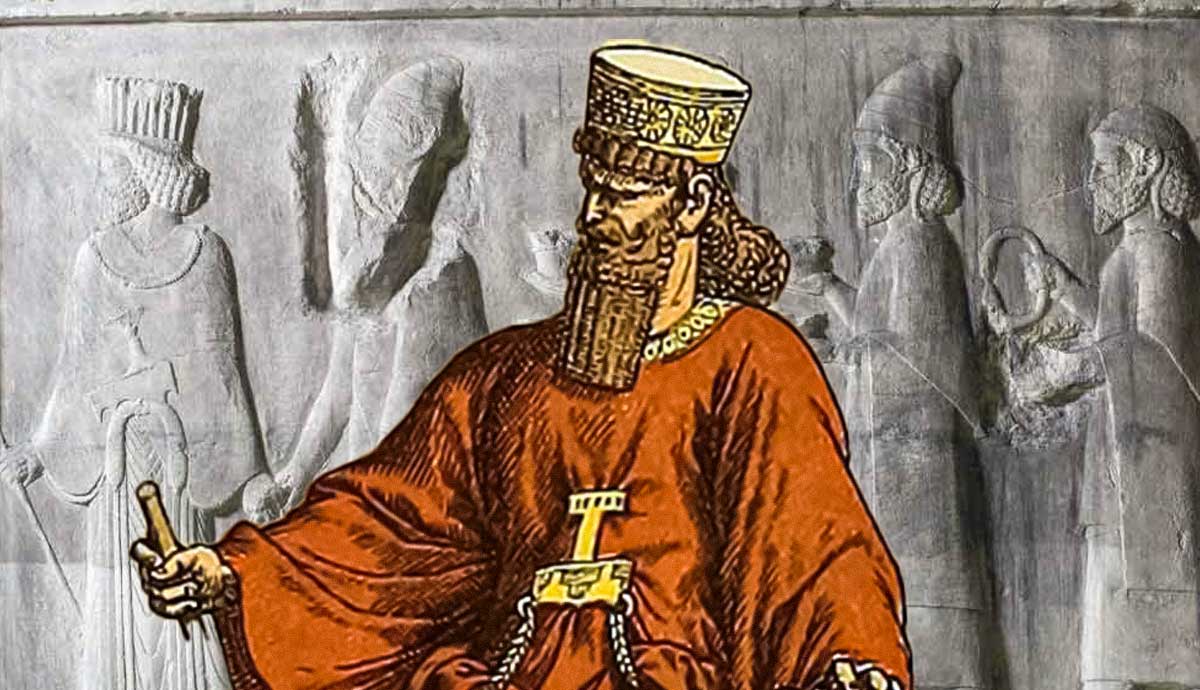
Much of what we know about individual Roman emperors comes from what they chose to build. In the 1st century CE, Nero was vilified for his greed, hoovering up great tracts of the city to turn into a private palace, the infamous Domus Aurea. A decade later, Vespasian was lauded for his public beneficence, converting Nero’s palace into the Flavian Amphitheater, better known as the Colosseum, returning space and leisure back to the people of Rome. The baths of the emperor Caracalla are a curious case. A vast palace of leisure and culture for the people, they were built by one of Rome’s most reviled emperors!
A Steaming Tradition: Thermae in the Roman World

There was a rich tradition of bathing in the Roman world. Thermae were typically larger public venues for bathing, and balnae were smaller, often private, bathing facilities. In fact, by the end of the Late Antique period, it was said that there were some 956 balnae scattered across the imperial capital!
Bathing facilities became a defining feature of Roman civilization. As the Empire expanded around the ancient Mediterranean world, so did Roman bathing culture. Most cities in the Empire then had some form of bath building. Typically, these were built where natural hot springs made hot water readily available, such as at Bath in England. The thermae were multifunctional structures. They were not only venues for bathing and exercise but also spaces for socializing, learning, appreciating culture, and sometimes even worship.

Although the specific architectural form of the thermae varied considerably around the Empire, fundamentally, they were all built around three rooms. These were the tepidarium (the warm room), the caldarium (the hot room), and the frigidarium (the cold room). There would also be an apodyterium (changing room), and many would also have a palaestra, or exercise ground. In bathing culture, there was a prescribed order for visiting these various rooms, with the visitor finishing their trip to the thermae at the frigidarium to purify the skin of sweat and other impurities.
Many thermae were ornately decorated, with the baths used as venues for advertising the wealth and prestige of the builder. This was magnified in the imperial period, as emperors began building vast public baths in Rome. The construction of these public edifices should be considered ideological undertakings, material expressions of the emperor’s generosity and care for the people over whom he ruled. The first of these public baths was built on the Campus Martius by Agrippa, the trusted general of Augustus. Soon, a tradition of imperial thermae construction emerged, and not only from those emperors you might expect to be so generous: Nero, Titus, Trajan, Caracalla, Trajan Decius, Diocletian, and Constantine all ordered the construction of grand public baths in Rome.
Rebuilding Rome: Severan Construction Work

In 197 CE, following a cataclysmic battle at Lugdunum in Gaul, the largest battle in Roman history, Septimius Severus was confirmed as the undisputed ruler of the Empire. Since 193, he had been engaged in a bloody civil war against three rivals. With his enemies dead and his power now indisputable, Severus returned to Rome and set about establishing what kind of emperor he wanted to be. Although he might have proclaimed himself to be an emperor in the vein of Marcus Aurelius—the philosopher emperor who he farcically claimed as his father—many elements of Severus’ reign reveal that Augustus, the first emperor, was a clear inspiration. In particular, this is seen in his attitude to restoring Rome.
Although Severus made no remark as pithy as Augustus’ claim to have found Rome a city of brick and left it a city of marble, the man from Leptis Magna was a prodigious builder. Across the city, he oversaw a spate of restoration work, including on the Pantheon, Agrippa’s architectural masterpiece, which still has the dedicatory inscription commemorating Severus’ work.
Alongside the restoration work, Severus was also responsible for several wholly new construction projects. Many of these were localized in the city’s southeastern corner. They included some thermae, the exact location of which remains unknown and debated by archaeologists, and the now-destroyed Septizodium. This vast nymphaeum, which looked like a theater, was positioned at the south-eastern base of the Palatine Hill, beneath the imperial palaces, which Severus had also revamped. This building work in the southeast of the city was a policy that would be continued by Severus’ eldest son Caracalla when he succeeded his father as princeps in 211.
Constructing the Baths of Caracalla

Unlike his father, Caracalla was not in the position of needing to be seen as a “restorer” of Rome. Thanks to Severus’ planning, power had passed smoothly to his sons upon his death. However, within a year of taking power, Caracalla had orchestrated the murder and condemnation of his brother and co-emperor Geta, jeopardizing much of the stability that his father had worked to cultivate. As sole emperor, Caracalla removed himself from any potential political maelstrom by launching a campaign against the Germanic tribes on the Empire’s northern frontiers, which was in keeping with his desire to be viewed as a soldier-emperor. Even before leaving for the campaign, however, and perhaps during the reign of his father, work had begun on a vast new set of imperial thermae.
The land for these new thermae had formerly been the vast estate of Gaius Asinius Pollio, a politician from the Augustan era who was responsible for building the first public library in Rome. At the time of the inauguration of the baths in 216, they were the largest thermae in the Empire and would remain so until the Baths of Diocletian were completed in the late 3rd century. They were also one of the largest structures in the entire Empire. They were serviced by two of Rome’s aqueducts: the Aqua Marcia and the Aqua Antoniniana.

The rectangular site encompassed approximately 25 hectares, with the thermae orientated northeast to southwest, which meant that the heat of the sun helped heat the premises. The structure of the thermae followed the same symmetrical plan as had been implemented in the construction of the Baths of Trajan, and would be followed in the Baths of Diocletian. The Great Bath building was symmetrical. The main central space was occupied by the tepidarium, with the great vaulted space of the frigidarium to the north and the circular caldarium with its seven pools to the south. The dome that topped the caldarium measured almost 36 meters in diameter, rivaling the Pantheon. It is thought—though not known for sure—that this vast domed space was the cella solearis, which is referred to by the Historia Augusta, describing it as a vault which was “of such a size” that the ancient architects said, “cannot be reproduced.”
A Palace for the People: Art and Wonder in the Baths of Caracalla

The great imperial thermae were venues where an emperor could demonstrate his beneficence to the people of Rome. Bestowing leisure and luxury on the people of the imperial capital was a way to keep unrest quelled while also ensuring the longevity of one’s name. The Baths of Caracalla were no exception. An extraordinary quantity of marble was used in the construction of these baths, including at least 252 marble columns in the main bath building. Modern visitors to Rome can still see details of these decorations, but only if they go to the Basilica of Santa Maria in Trastevere. There are 22 granite columns with a combination of Ionic and Corinthian capitals, and these were taken from the Baths of Caracalla to adorn the place of Christian worship. On closer inspection, one can still make out the distinctive elephant heads curved into a number of these capitals; elsewhere, the faces of ancient deities, such as Isis and Serapis, were chiseled off on the orders of Pope Pius IX in the late 19th century.
As well as places of leisure, the great public baths in Rome served the cultural interests of the city’s populace. They became places of learning, with the Baths of Caracalla being home to two libraries, which were incorporated into the structure’s symmetrical plan. There was one library for texts in Latin, and another for texts in Greek, providing a reminder of the polyglot, cosmopolitan diversity of the Roman Empire.

The Baths of Caracalla also functioned as a vast gallery for the public display of artistic masterpieces. The surviving pieces include some of the most striking artworks to have survived from antiquity. This includes the so-called Farnese Bull. The largest single sculpture to have survived from antiquity, it depicts the myth of Dirce; the wife of Lykos, King of Thebes, who was tied to a wild bull as punishment for the ill-treatment of Antiope. The statue at the Baths of Caracalla is a Roman copy of an earlier Hellenistic original, which Pliny the Elder attributed to Apollonius of Tralles. Intriguingly, the original was brought back to Rome and ended up in the possession of Asinius Pollio, the same individual whose private land became the future site of the thermae.

As well as this dramatic, dynamic representation of Dirce’s punishment, the Baths of Caracalla were home to the Farnese Hercules. A colossal version of the “weary Hercules” statue type, this nude statue depicts the Greek hero at rest; he leans against his club, while in his other hand, behind his back, he holds the apples of Hesperides. While these sculptures are currently on display in Naples, other artistic remains from the Baths of Caracalla can be seen throughout the city of Rome itself. In the Vatican Museums, one can see the colossal mosaic flooring from the baths, which depict a variety of athletes. In the city itself, two enormous granite basins from the thermae now adorn the Piazza Farnese.
Subterranean Secrets: The Mithraeum at the Baths of Caracalla

In part because of their provincial backgrounds from North Africa and Syria, previous histories of the Severan emperors have been influenced by Orientalist tropes. Amongst these, and perhaps fuelled by a special fascination with Elagabalus and his singular devotion to his native Syrian sun deity, the Severan dynasty has been characterized as one of religious transformation. These interpretations suggest an increasing prominence of monotheistic religions and religions from the Empire’s eastern provinces. While such interpretations have been challenged by historical research, it is nevertheless striking that one of the largest known gathering places for the worship of the god Mithras was uncovered beneath the thermae of Caracalla.
The Mithraeum, excavated in 1912, was the place for initiates into this mystery cult. The Mithraeum at the thermae followed the typical layout for Mithraea found across the Empire, including a vaulted ceiling and benches for the worshipers lining each side. No image of the tauroch—the scene of Mithras slaying the bull—has been found at this particular site. The place of worship is actually part of a vast network of subterranean structures at the Baths of Caracalla. The vast majority of these are service tunnels. Running for hundreds of meters, these allowed the slaves who worked at the thermae to access the furnaces that kept the water and rooms heated for the visitors above.
After Empire: Uses and Reuses of the Baths of Caracalla

Rome’s great public baths were victims of the slow decline of the Western imperial capital. While investment was funneled into the aggrandizement of Constantinople, including the construction of public baths, Rome found itself increasingly beleaguered and sacked by invaders several times over the course of the 5th century. However, it was not until Belisarius, under orders from the emperor Justinian, tried to retake the Italian peninsula for the Byzantine Empire in the mid-6th century that the public baths finally ended. During a siege of the city in 537 CE, the city’s aqueducts were cut. Starved of water, the vast imperial thermae fell into disuse, with the artworks neglected and the buildings themselves despoiled for building material in the medieval city.

Despite this, the Baths of Caracalla had an especially long-lasting legacy, both in Rome and beyond. In the immediate aftermath of their construction, the thermae served as a model for future attempts to build vast public edifices. The thermae of Caracalla influenced the architecture of not only other imperial baths—such as the thermae of Diocletian—but also other public edifices, notably the Basilica of Maxentius in the Forum Romanum. Centuries later, after the rediscovery and excavation of the remains, the thermae would influence a number of modern structures. Perhaps the most famous of these was the original Penn Station in New York. Demolished in 1963, the main halls of the train station were modeled on the vast vaulted spaces of the frigidarium in the baths of Caracalla.
Back in Rome, the thermae of Caracalla have enjoyed a rich afterlife. Intriguingly, they have stayed mostly true to their original purpose. Just as in antiquity, the remains of the ancient baths have been used as a space of cultural enrichment for modern visitors. In the 20th century, concerts were held in the ruins, and in 1960 the gymnastic events at the Olympic games were hosted in the thermae.










